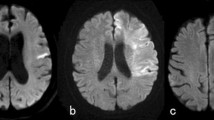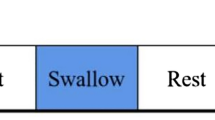Abstract.
The mechanism and neural substrates that mediate lingual coordination during swallowing have not been well characterized. Although lingual discoordination during swallowing has been difficult to quantify, it has been defined as the random disorganization of anterior–posterior tongue movements evident in bolus propulsion. In a sample of consecutive acute stroke patients (n= 59), videofluoroscopic evaluation showed a 19% incidence of lingual discoordination during swallowing. Lingual discoordination during swallowing was not commonly associated with buccofacial apraxia, apraxia of speech, nor limb apraxia. Hemisphere and anterior–posterior localization did not predict occurrence of lingual discoordination. Lingual discoordination during swallowing occurred commonly in patients with subcortical lesions with the periventricular white matter (PVWM), the most common site of involvement. PVWM lesions may disconnect anterior and posterior cortical regions that are critical to oral control and coordination in swallowing, thereby producing lingual discoordination during swallowing. These data also suggest that the neural mechanisms that mediate lingual coordination may at least in part be independent of the neural systems that mediate buccofacial, limb, and speech praxis functions.
Similar content being viewed by others
Author information
Authors and Affiliations
Rights and permissions
About this article
Cite this article
Daniels, S., Brailey, K. & Foundas, A. Lingual Discoordination and Dysphagia following Acute Stroke: Analyses of Lesion Localization. Dysphagia 14, 85–92 (1999). https://doi.org/10.1007/PL00009592
Issue Date:
DOI: https://doi.org/10.1007/PL00009592




